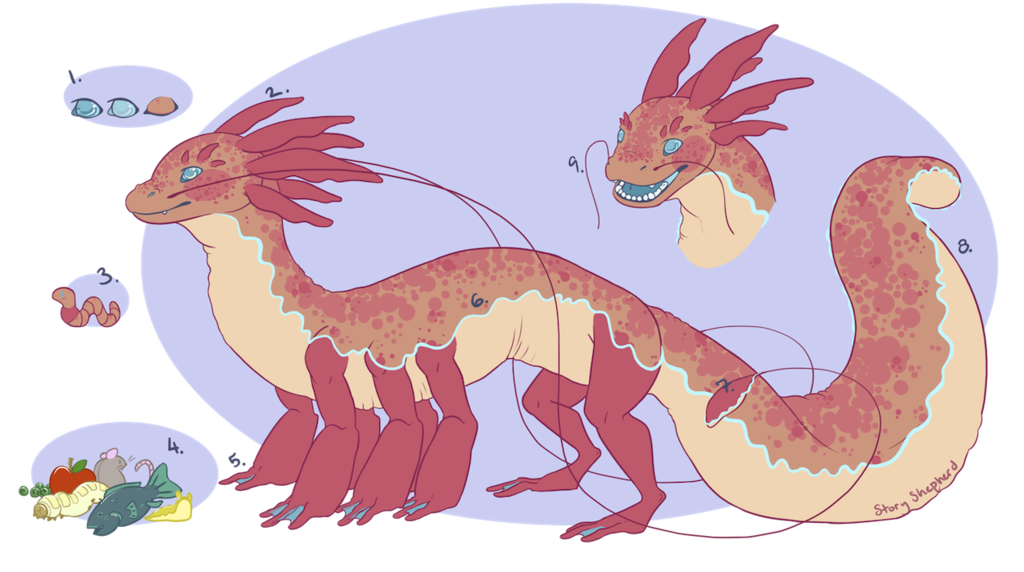Sign In
CloseAxolotl Dragon Species Guide: Anatomy by ZookieDragonet
Axolotl Dragons are a closed species please do not make your own
Feel free to ask questions or leave suggestions and I'll edit the information as needed!
Axolotl Dragons live about 45 – 55 years, grow 3-5 feet or in extreme cases 8 feet. This is the last stage in Axolotl Dragon development and they use this opportunity to travel to other streams and ponds in order to find mates and to lay their eggs.
Eyes: Axolotl Dragons have rather poor eyesight and are quite nearsighted, they rely on sensing water vibrations in order catch prey and flee from predators. They have 2 sets of eyelids, when swimming the second eyelid clears the eye of debris.
Sensory Appendages or Wattles: These are used to sense water vibrations and to hear. They are also used to communicate with other axolotl dragons, wiggling their wattles can be a show of excitement and joy. Flaring their wattles can be a show of aggression and be used to intimidate rival axolotl dragons.
Familiar: Axolotl Dragons find their familiars at an early age, bond, and then begin mimicking their markings and adaptive traits. Familiars are most commonly insects but can also be frogs, fish, snakes and lizards. They have never been recorded to bond with mammals or avians and it is said to be impossible.
Diet: They’ll eat practically anything they can fit in their mouth, from frog eggs, insects, fish, fresh water clams, to frogs, salamanders and small rodents if they can catch them.
Feet: They have 8 legs, with 3 toes on each foot and webbed feet.
Lateral Line: They have a very visible lateral line used to detect movement and vibration in the surrounding water providing spatial awareness, navigate, orientate themselves, as well as sense nearby prey.
Sensory Whiskers: Used to feel around in murky water and lure in fish.
Tail: They use their powerful tails to propel themselves in the water, store fat and for territorial displays they will slap the surface of the water with their tails and flare their wattles.
Mouth: Axolotls Dragons have sharp teeth for tearing flesh as well as molars to crush shells and small bones. They have large thick forked tongues and located in the back of their throat is a palatal valve, found also in crocodiles, to prevent water from flooding the throat as they catch prey underwater.
Submission Information
- Views:
- 1754
- Comments:
- 1
- Favorites:
- 7
- Rating:
- General
- Category:
- Visual / Digital




Link
klax
v cute and v informative!